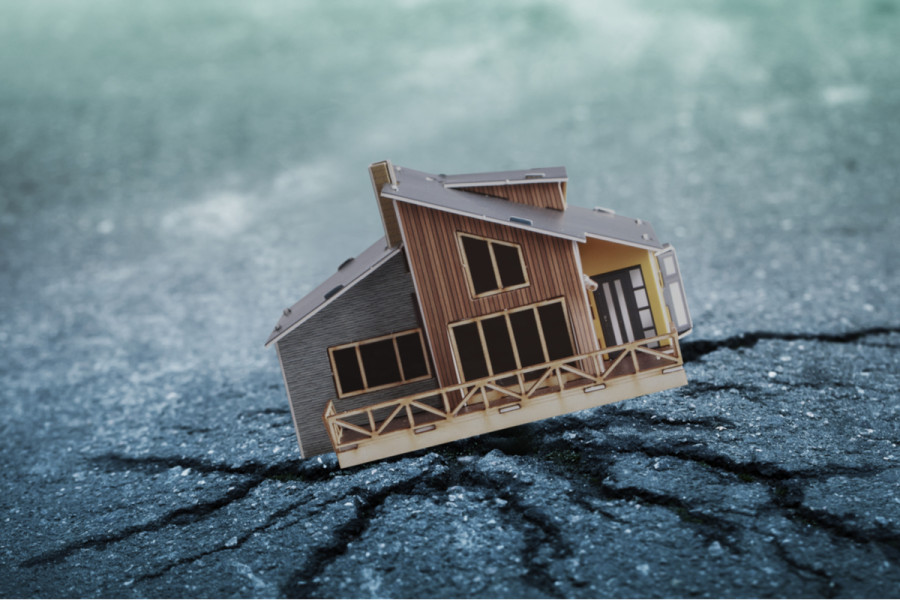Columns
Five years since the Gorkha earthquake, Nepal still falls short
The country being in a highly-vulnerable seismic zone, one would think the government and society would plan better.
Keshab Sharma
Amidst the Covid-19 pandemic, the 5th anniversary of the devastating 2015 earthquake was observed on April 25 in Nepal. The earthquake claimed the lives of around 9,000 people, and hundreds of thousands of Nepalis were made homeless. The National Reconstruction Authority was established immediately after the earthquake to coordinate reconstruction following the quakes. Five years on, we must assess whether we have learnt anything from the experience.
It should be noted that the earthquake had provided an opportunity to reconstruct all residential buildings and public service facilities in the affected areas following seismic-resistant standards. Big disasters are turned into opportunities for development by other nations. Local governments should have been utilised this opportunity to build earthquake-resistant cities and villages, and we should have cooperated with the government so that the next earthquake wouldn’t leave us shelterless.
The reconstruction authority has a mandate to rebuild what was ruined. It publicised itself with the slogan ‘build back better’ which is an idea that emerged in the aftermath of the 2004 Indian Ocean tsunami. The concept is defined as improving societies’ social, environmental, physical, and economic conditions relative to a pre-disaster situation. Unfortunately, the reconstruction body failed to live up to its motto when it came to residential and public buildings and other infrastructures. The authority still considers the rebuilding of a number of buildings and houses, regardless of their functional usage, as the metric to go by. Seismic resistance in residential buildings is only one parameter out of many to develop a resilient society. The National Reconstruction Authority was beset by problems right from the start, including political hurdles and a shortage of qualified staff. Reconstruction efforts have been inefficient and bogged down in bureaucracy.
Located in a very high-risk quake zone, the disaster preparedness of Nepal exists only on paper, just like the rules to construct earthquake-resistant buildings. Five years after the Gorkha earthquake, the government shows no sign of having learnt a lesson—there is no new plan to make quake-resistant construction mandatory throughout the country, no new regulation on hospital and public buildings, no strengthening of rules to make infrastructures like bridge and dams, more quake-resistant. Further, there haven’t even been any quake preparedness drills in schools or colleges, and no curriculum update in higher education to cope with disasters.
Planning failure
Nepal has not taken a significant step to reduce its seismic vulnerability. Let’s consider Kathmandu, for instance. One study showed that about 85 percent of residential buildings in Kathmandu Metropolitan City have not received the 'construction conclusion' certificate, only because their homes do not comply with building code and bylaws. Have we done anything to retrofit those sub-standard buildings to comply with the existing building code? Have we managed more open spaces in Kathmandu Valley, the lack of which is regarded as a significant risk multiplier during disasters? Have we started periodic drills for all people to teach them the best course of action to take in a location to protect themselves and others from earthquakes? Has the seismic vulnerability of the Kathmandu Valley been reduced by some fraction since 2015? The government had temporarily banned construction of houses above two storeys along with other tougher provisions for building construction. It has, however, now backtracked from enforcing these; the building codes are flagrantly violated.
More than 80 percent of the buildings in Nepal are unreinforced—or poorly reinforced—masonry buildings. From these, more than half are constructed using mud mortar. More than 90 percent of the collapsed buildings during the 2015 earthquake were such masonry buildings. Considering our socioeconomic situation, we cannot avoid such buildings unless and until we increase our per capita income significantly. Unfortunately, our universities hardly deliver any courses on masonry buildings except a few introductory chapters. However, we have extensive courses on reinforced concrete and steel structure which hardly constitute 2 percent of the buildings in Nepal. This situation remains the same even after the 2015 earthquake. Our universities failed to redevelop its courses even after facing disaster and seeing how inadequate education was. At the same time, many traditional buildings in Nepal were built with earthquake-safe technology hundreds of years ago, using timber, brick, stone or mud, and lime. Those buildings survived many big earthquakes in the past. They might have collapsed in the recent earthquake because materials do weaken due to age and poor maintenance. Have we started any research or study to make our traditional buildings earthquake resistant?
We had a huge shortage of tarpaulin during the emergency response immediately after the earthquake. Do we have enough emergency supplies for earthquake preparedness except for the few thousands tarpaulin received from China? Do we have enough special equipment, including personal protective equipment and respiratory protection (for example, escape respirators), for disaster responders?
Lacking preparedness
It is also disturbing to note that in the last five years, we have not been able to implement the building code, even in urban areas. We have learnt no lessons from the last earthquake. It is clear that nobody cared about rules and regulations when it came to construction. What we know for certain is that the disasters will never cease. We must plan and prepare before the next earthquake, which can strike at any time. It seems the government and the people are just asking for another disaster to hit, nevermind the preparedness. We will again mourn for thousands of people, lose economic gains and beg for foreign aid.
It seems the government officials have no realisation about the vulnerability of this mountainous area. Risk is considered as the product of hazard and vulnerability. In order to reduce the earthquake risk, we need to reduce vulnerability. The vulnerability can be reduced significantly by making earthquake-resistant structures mandatory. The 2015 Gorkha earthquake killed nearly 9,000 individuals and ruined entire communities in 14 districts in central Nepal. Were it to occur today in western Nepal, the devastation would be much worse. We need to institute national earthquake-preparedness programmes and practice emergency-management procedures. We must invest in more resilient infrastructure and communities so that real recovery can occur. Five years after the earthquake, we must realise that while we have lost a lot of time, there is still an opportunity to move in the right direction.




 8.12°C Kathmandu
8.12°C Kathmandu















